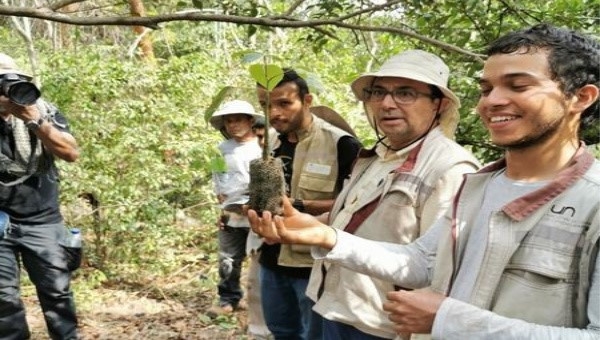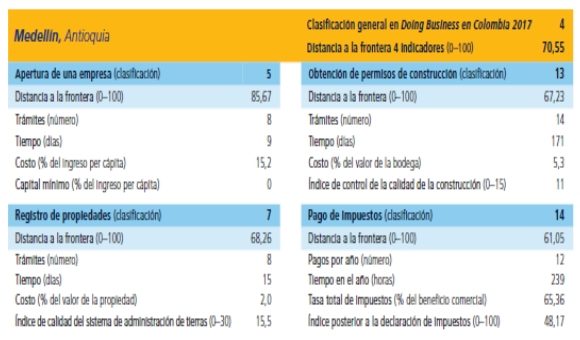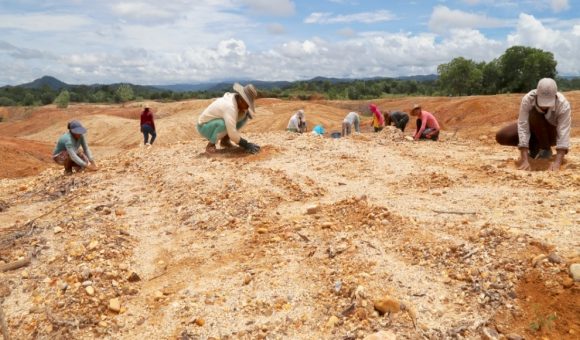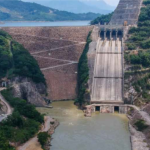EPM Completes 95% of US$330 Million Social, Environmental Spending Around Hidroituango Project in Antioquia

Medellin-based electric power giant EPM revealed July 8 that it has now spent 95% of its COP$1.2 trillion (US$330 million) budget for social and environmental projects in 13 municipalities around its 2.4-gigawatt “Hidroituango” hydroelectric project in Antioquia.
The massive spending is benefitting both people and the environment in-and-around the towns of Briceño, Ituango, San Andrés de Cuerquia, Toledo, Valdivia, Yarumal, Buriticá, Liborina, Olaya, Peque, Sabanalarga and Santa Fe de Antioquia, according to the company.
Among the latest beneficiaries are several more families getting brand-new apartments in the municipality of Ituango, where EPM also built an adjacent sports hall for recreation.
“In the seven years of execution of the social investment plan, numerous actions have been carried out to contribute to the improvement of [highway and bridge] connectivity, infrastructure in education and housing, health conditions and food security of the communities,” according to the company.
“To facilitate the connectivity of the region’s inhabitants, the Hidroituango project has contributed to the recovery of 1,218 kilometers of secondary and tertiary roads [as well as] bridleways [for horse- and foot-traffic],” according to EPM.
As for nutritional food security, EPM identified 3,785 families for “training, technical assistance, tools, supplies, and fertilizers to create and maintain their own crops. In total 3,065 hectares were intervened in 378 outlying neighborhoods to make these productive projects a reality,” according to the company.
“In addition, 2,300 families benefited from the ‘Maná Project’ via the creation of vegetable gardens and the establishment of productive ventures,” according to EPM.
In housing, EPM has delivered to date new residential units for 52 families and “contributed to improving the conditions of 659 other homes,” according to the company.
As for education, EPM “contributed to the improvement of 71 educational establishments, which consisted of adapting classrooms, libraries, dining rooms, recreational spaces, among others, and built seven new training centers,” according to the company.
As for health, EPM “invested resources in facilitating access to formal health care networks, with improvements and equipment provided to a health center, provision of two ambulances and health care services for 12,463 people. The ‘healthy schools’ program also was implemented in 10 educational institutions,” according to the company.
As for public utilities, 5,489 more families were connected to natural-gas service, while eight aqueduct and sewer master plans were developed.
As for reforestation, EPM is restoring 24,530 hectares of vegetation in the Cauca River canyon to compensate for inundated lands behind the dam.
“The actions carried out include planting 70 native species typical of the dry tropical, humid tropical and premontane forests,” according to the company.
“In the 12 years that the project has been under development, EPM has acquired 24,530 hectares, mainly in areas surrounding the reservoir and areas degraded by the gradual actions of different economic activities in the municipalities of Buriticá, Liborina, Sabanalarga, Peque, Ituango, Toledo and Briceño,” according to EPM.
The land acquisitions “offset the impacts caused during the construction of the dam reservoir, main works, access roads and future operation of the hydroelectric project,” according to the company.
The 20-year reforestation and conservation plan includes “4,137 hectares of tropical rain forest, 13,860 hectares of tropical dry forest and 6,532 hectares of damp, premontane forest,” according to EPM.
“Ecological restoration actions not only include the planting of native species, but also involve the analysis of coverage, connectivity, landscape, flora and fauna [in order to] set feasible restoration goals to achieve recovery of soils, water resources and biodiversity.
“In the project’s area of influence, studies and monitoring carried out by biologists, agronomists, zoologists and experts in other disciplines have so far registered nearly 16 species of amphibians, 36 reptile species, 300 bird species and about 36 mammal species,” the company added.
















